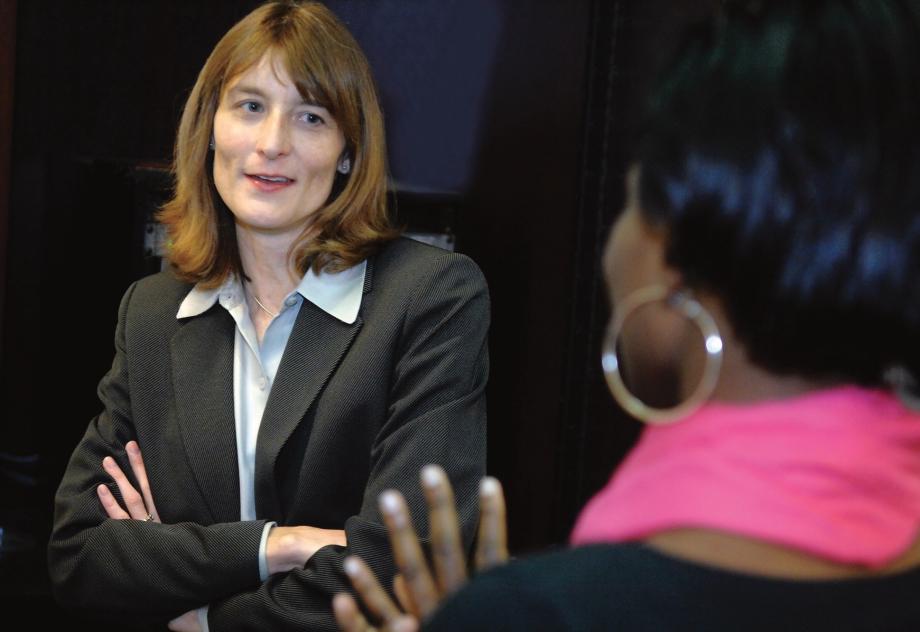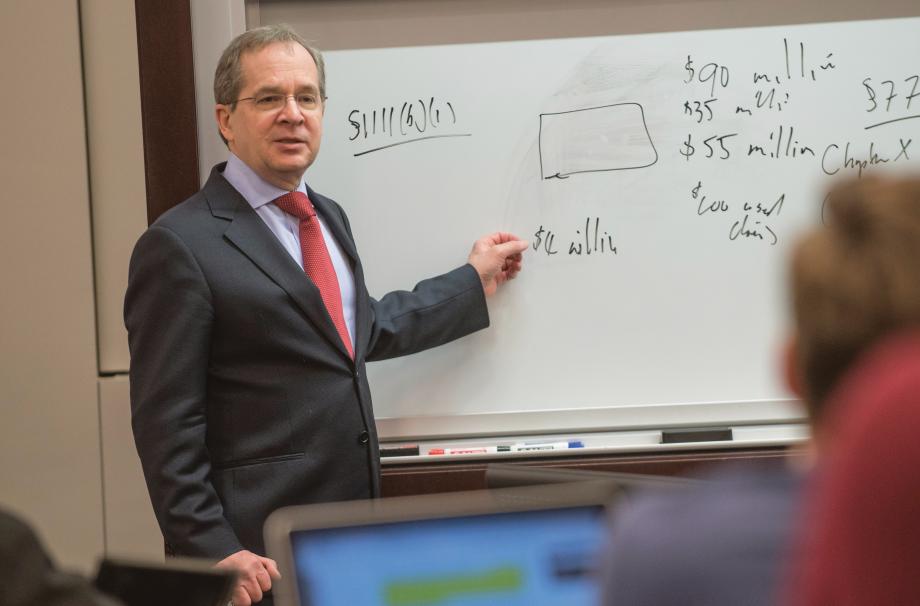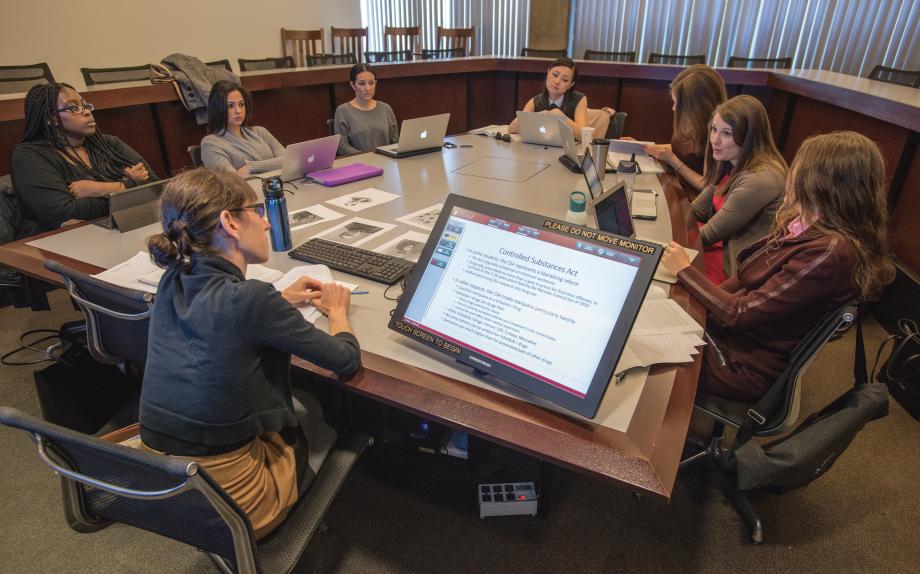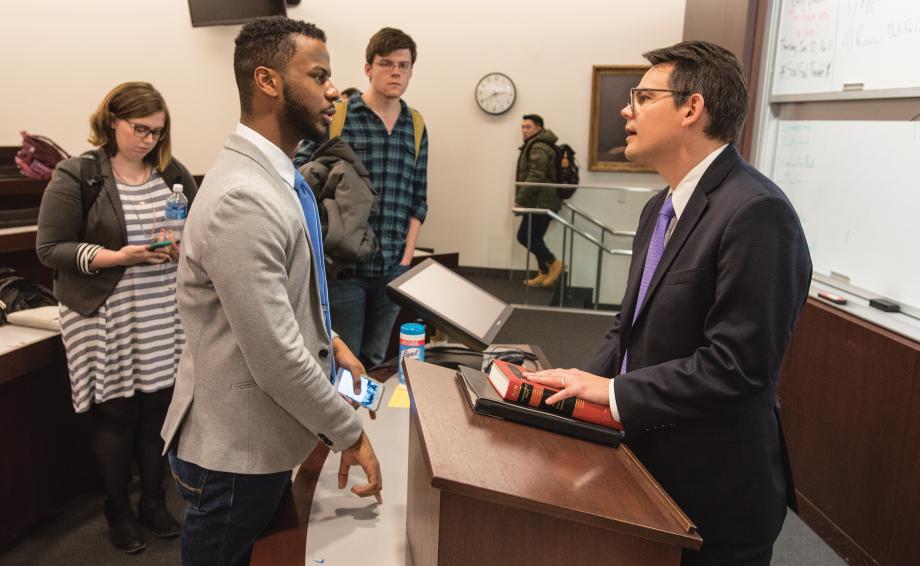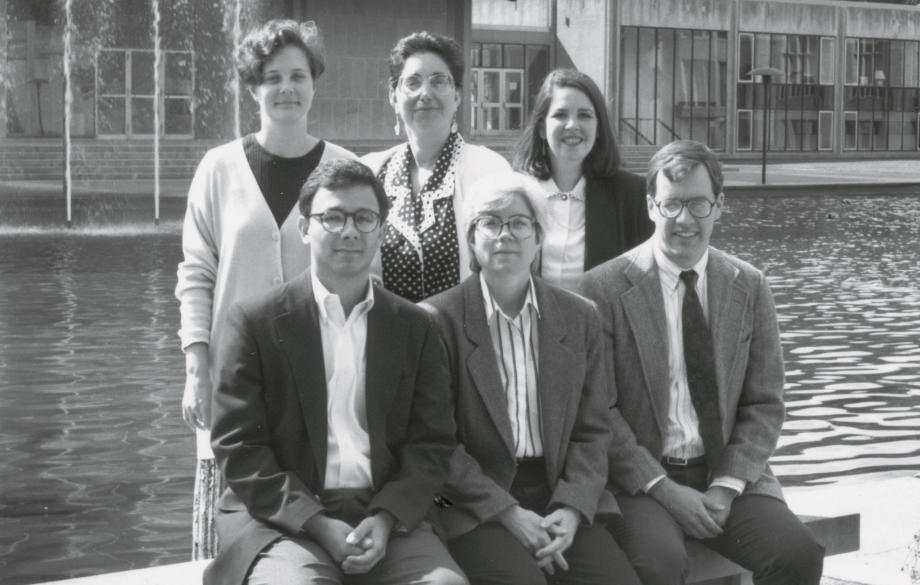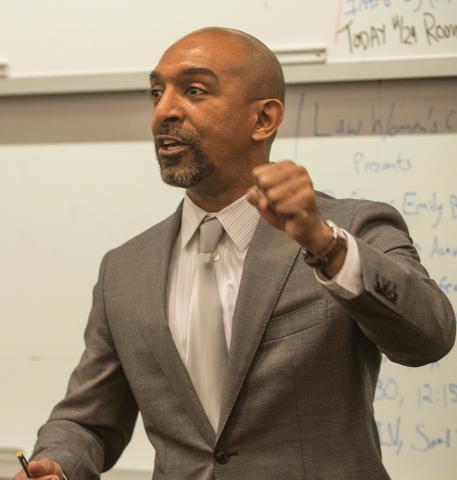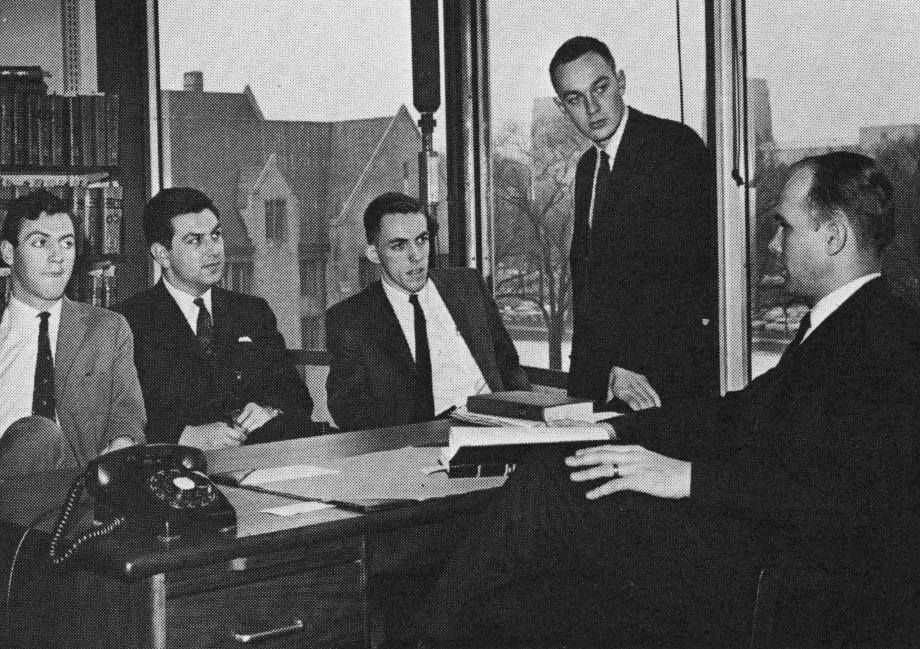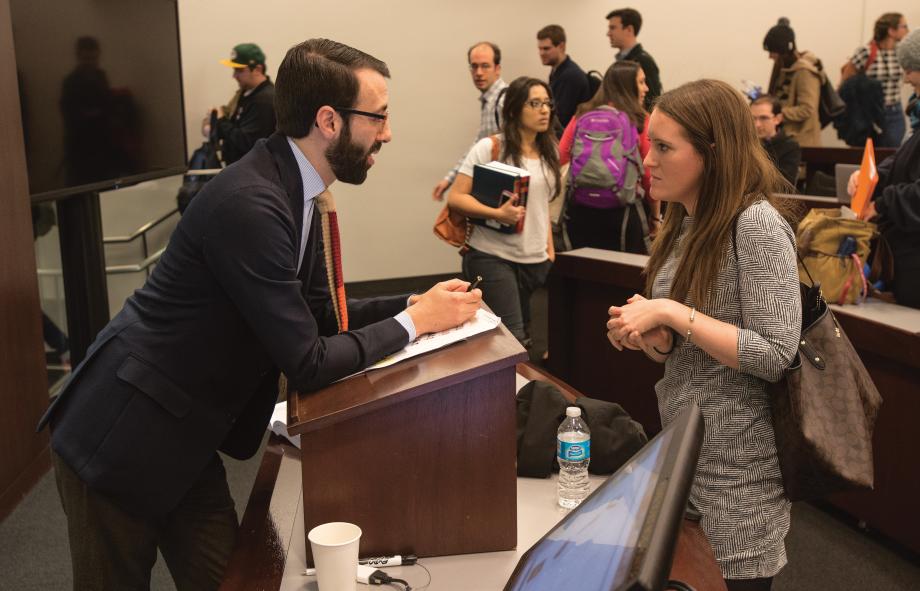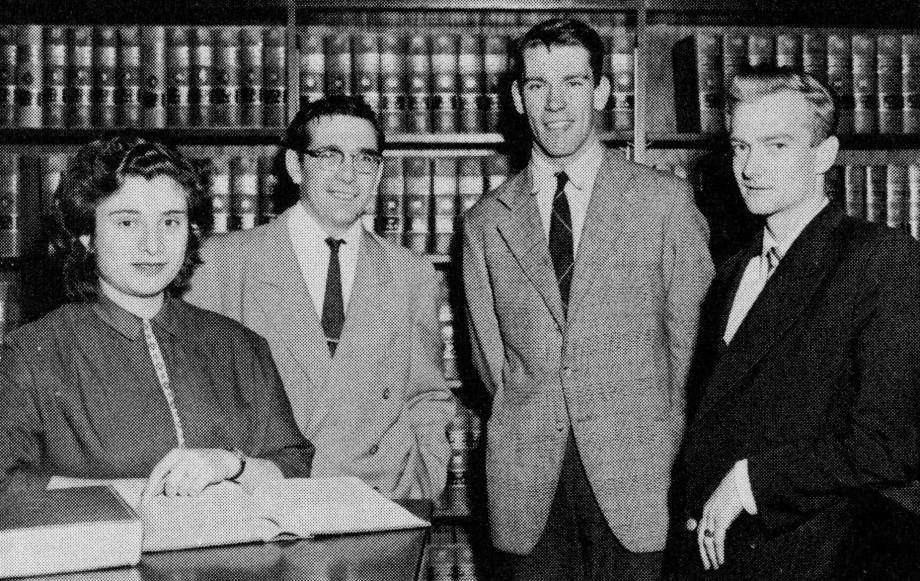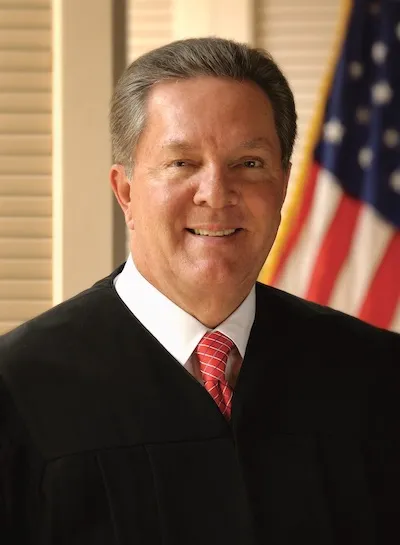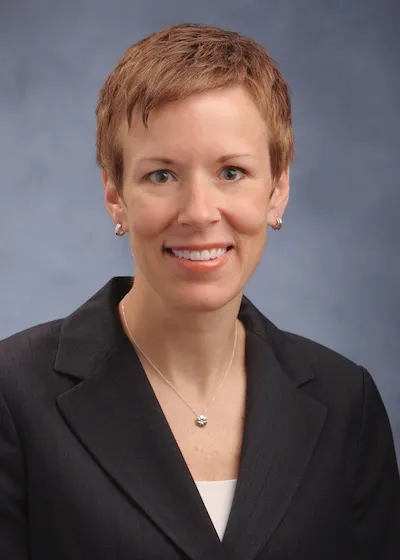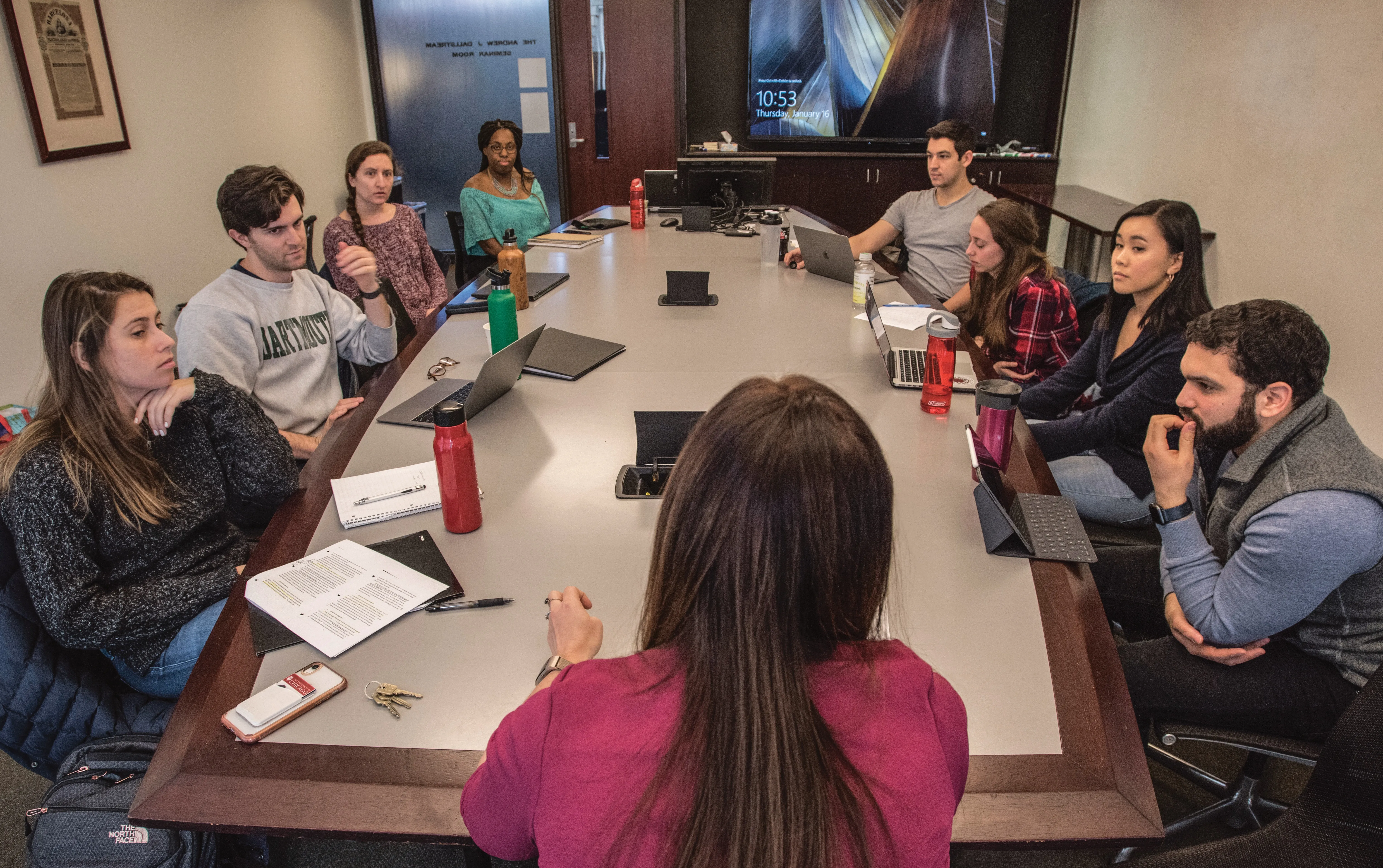The Boldness of the Bigelow Fellowship
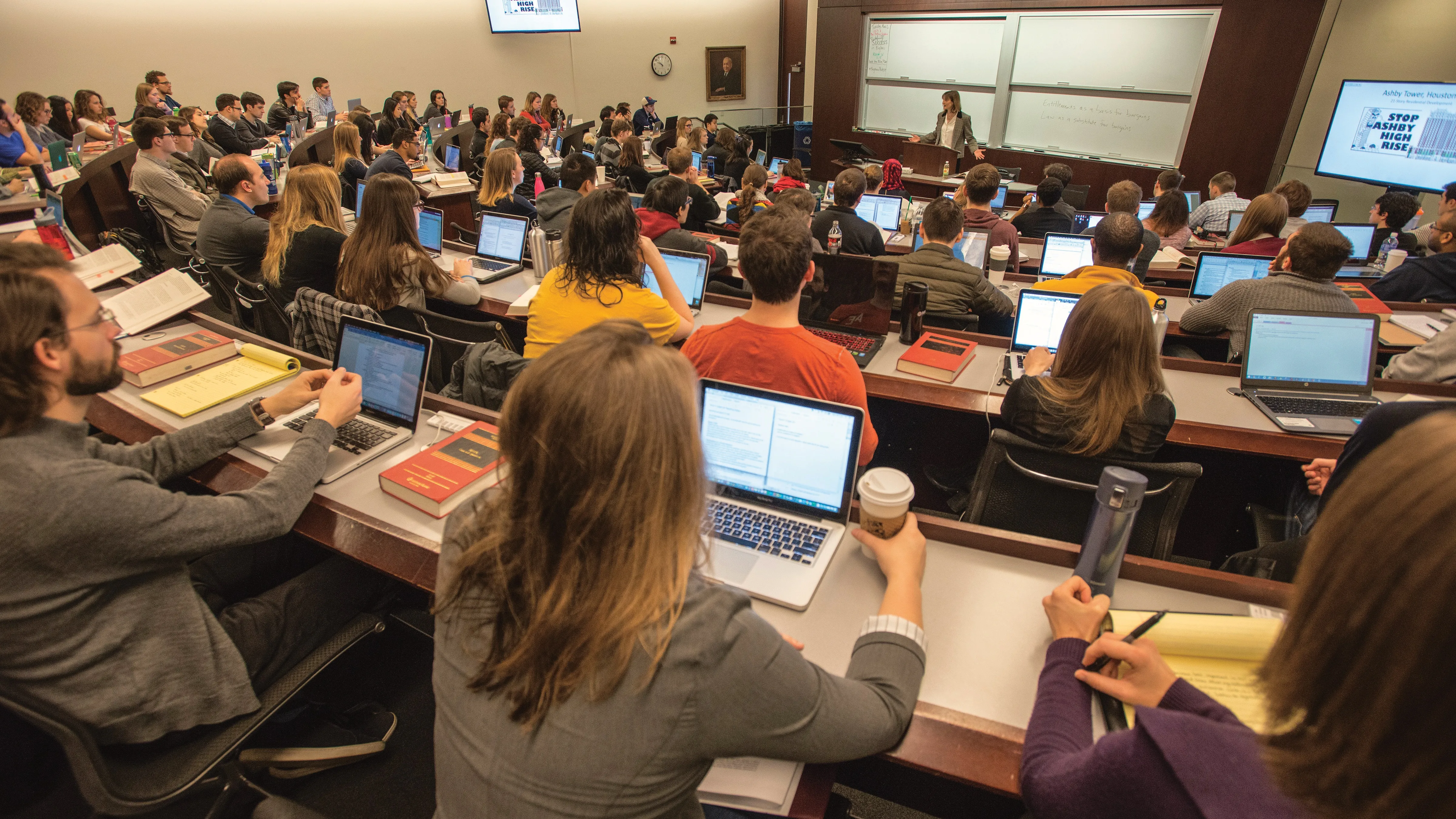
From the time she stepped on campus as a new Harry A. Bigelow Teaching Fellow in 1999, Lee Fennell could tell that the University of Chicago Law School operated at a particularly high level of intensity. She had applied for academic jobs before her fellowship, but it was Fennell’s immersion into the Law School’s intellectual life that hammered home the key to great scholarship: cross-pollination and expansive, even unconventional, thinking.
It was the boost she needed to break through.
“At Chicago, people from different areas and methodologies really listen to each other and try to understand each other’s work—to a greater degree than I’ve seen at other schools,” said Fennell, who has taught at half a dozen law schools as a visitor or faculty member. “The entire [Bigelow] experience was transformative. It put me in a position where I was able to get a tenure-track job, which I could never have done without the fellowship.”
Fennell, who joined the Law School’s faculty in 2007 and is now the Max Pam Professor of Law, is one of hundreds of alumni of the Law School’s Bigelow Fellowship, a 73-year-old program that began as a tutorial system for 1Ls and is now also widely recognized as a premier training ground for legal scholars.
The two-year fellowship is a demanding and all-encompassing experience, one in which budding academics immerse themselves in Law School culture, often developing tight bonds with one another as they cultivate the skills necessary to succeed at the highest levels of teaching and scholarship. Bigelow fellows lead legal research and writing classes, imparting critical workplace skills to their 1L students while also learning from masters of legal academia. The fellows research and write academic papers and attend the same workshops as other faculty, discovering what it means to have their work challenged and rigorously debated. And they create a network of feedback and support: a former Bigelow who now teaches at Columbia Law School says the community that emerged among the fellows she served with in the early 2000s was a key part of the experience—one built around supporting stellar scholarship and nurturing professional relationships, many of which continue today.
The program is an effective launching pad: Since at least 1999, every Bigelow fellow has received at least one tenure-track offer. Bigelow alumni can be found on the faculty in some of the best law schools across the country. They are top legal experts in a wide array of areas including administrative law, culture and the law, law and economics, and property law, and they have risen to become law school deans and leaders in business and government. Some have pursued PhDs in other areas.
“The University of Chicago Law School is the most intense academic environment in any American law school. People are engaged, inquisitive, and hard at work,” said Professor Adam Chilton, a recent codirector of the Bigelow program. “I can’t think of a better investment of time than the Bigelow Fellowship before going on the market.”
Interdisciplinary Work and Committed Teachers
The Bigelow program, named for former Dean Harry A. Bigelow, draws its power from two Law School traditions, both of which have been baked into the program’s mission from its inception in 1947. Although the program itself has evolved—the number of fellows has varied over the years, and up until the late 1990s the program was typically one year rather than two—it has always reflected the school’s emphasis on interdisciplinary inquiry and its commitment to being “a teacher of teachers.”
These dual values, along with its decades-long history, have set the Bigelow Fellowship apart from similar programs at other schools, creating a structure that has not only endured but has adapted naturally to changes in legal academia.
In the late 1990s, when faculty-hiring committees began to place increasing value on interdisciplinary work, the Law School and its Bigelow program were already poised to meet the market demand. The noted law and political science professor Ernst Freund had argued for a cross-disciplinary approach during the school’s earliest days—and the Bigelow program had long attracted scholars drawn to that style of inquiry.
“It has always been interdisciplinary at Chicago, but now it’s interdisciplinary everywhere,” said Douglas Baird, the Harry A. Bigelow Distinguished Service Professor, a former dean of the Law School, and a codirector of the Bigelow program.
As interdisciplinarity took hold at law schools across the country, hiring committees also began seeking candidates with more than top grades and clerkships; they wanted to see published work as well.
“It was common [more than 20 years ago] for people to start as assistant professors without having published,” said Baird, who was hired at the Law School in 1980 immediately after a clerkship on the US Court of Appeals for the Ninth Circuit. “The attitude was ‘We’ll see what happens and how they develop as academics.’ New professors did not usually start with a fully formed agenda.” Now, Baird said, “the expectations of the tenure-track academic basically require candidates to have immersed themselves in the maelstrom of legal academic thought.”
It was an easy shift for the Bigelow program: faculty welcomed the contributions of the fellows and actively sought to expand opportunities for scholarly engagement between professors and the Bigelows. When the Law School gradually expanded the fellowship to two years in the late 1990s, it did so in part because “we wanted the opportunity to be with [the Bigelow fellows] as scholars,” said Professor Randal Picker, who served as deputy dean shortly before the shift.
Among Bigelows who have served in recent years, about half had PhDs when they entered the program, said Chilton, who joined the faculty in 2014 after serving as a Bigelow fellow. Chilton codirected the Bigelow program from 2016 to 2019 and holds both a JD and a PhD in political science from Harvard.
“Typical applicants have well-designed research profiles, know the methods that they will use, and [know] their perspective on the subjects they are studying,” he said.
Although advanced degrees beyond JDs are not required, all six of the current Bigelow fellows—Travis Crum, Cree Jones, Erin Miller, Elizabeth Reese, Ryan Sakoda, and Roseanna Sommers—have one. Four hold PhDs—two in economics, one in politics/political theory, and one in psychology. Two have held federal appellate clerkships, including one on the US Supreme Court; one has worked at the United Nations Conference on Trade and Development; and another has been a bioethicist who provided guidance to doctors, patients, nurses, and researchers.
Strong Bigelow candidates also embrace the Law School’s emphasis on teaching excellence, Baird and Chilton said.
“An important characteristic of teaching at the Law School, whether you’re on the tenured faculty track or starting out as a Bigelow, is understanding that the Law School is a place where teachers and teaching really, really matter,” Baird said. “Writing effective legal prose matters, of course, but if you don’t have an interest in teaching, if you don’t affirmatively look forward to teaching, or if you regard it as just a chore, you’re in the wrong line of work.”
Mentors and Mentees
The Bigelow program was originally set up to teach all 1Ls legal research and writing; previously, that training had been reserved for students on Law Review. Bigelow teachers, who led groups no larger than six students, hailed from law schools that included Harvard, Yale, Columbia, Virginia, Pennsylvania, Northwestern, and Cornell. A unique feature of the program’s early years was that some of its teachers were from schools in Great Britain and other common-law countries, including the University of Cambridge, the London School of Economics, Oxford, and the University of Melbourne.
Today, teaching strong legal writing and stellar research skills is still the program’s primary goal. Led by the Bigelow fellows, students learn in their first quarter about legal analysis and preparing memoranda. They dive deep into legal research in the winter quarter with added guidance from the Law School’s librarians, and in the spring and final quarter, they apply what they learned in the first two quarters by writing appellate briefs and presenting oral arguments.
“The expectation is that fellows are more approachable mentors than the doctrinal faculty and should be available to give advice on things like studying for exams, applying for summer jobs, and navigating the rest of law school,” Chilton said.
Bigelows, of course, experience both sides of mentorship, giving and receiving.
Elizabeth Francis Emens—a Bigelow from 2003 to 2005 who is now a tenured professor at Columbia Law School—said she learned important lessons from the Law School faculty.
“One memory that stands out was watching David Strauss teach. He was clearly kind and generous and not trying to make anyone uncomfortable—certainly far from the humiliation model of The Paper Chase,” Emens said. “But he also had techniques that kept the room completely engaged. He waited until the end of a question to say the name of the person he would call on. Everyone waited, feeling the question could come to them. Everyone was included and kept on the edge of their seats. I still employ this technique and think of David.”
Her cohort of fellows did much to support and prepare each other for contributing to the larger faculty conversation.
“I felt tremendous camaraderie and friendship with the other fellows. One thing we did to feel more like teachers and engage in intellectual life was to meet the night before every WIP to discuss papers,” said Emens, referring to the Chicago faculty’s weekly Work in Progress lunch. “We bounced ideas off each other and engaged in lively discussions to get a sense of whether our ideas were worth asking in the main faculty session. These weekly sessions helped build community among us as scholars. Some of us still keep in touch.”
How much the fellows teach ebbs and flows over the course of their two-year appointment. The vast majority of their teaching time happens when the three main assignments are due and fellows give feedback and grade assignments. In the spring of their second year, Bigelows are given the opportunity to teach a seminar on a topic of their choosing and are trained and mentored by senior faculty in teaching in other ways.
“We review the fellows and talk to them about anything that comes out of those evaluations,” Chilton said. “We also meet with them to talk about content, what they should be covering, and how to cover it. Some fellows give lunch talks for student groups and play larger roles as student mentors. Others help organize conferences and are part of outside organizations.”
The program is not easy. Applicants are told there is a trade-off coming to Chicago, Chilton has said: You will do more teaching and more work—but you will get more in return in terms of developing your scholarship and your academic career.
“It’s part of what makes the program so compelling,” Chilton said.
The Different Paths to Academia
After law school, Fennell tried on different hats while traversing what she called “a complicated path.” She worked in a law firm, primarily focusing on government contracts, and later practiced at the State and Local Legal Center writing amicus briefs for cases pending in the US Supreme Court. She also received an MFA in fiction writing, which gave her a chance to teach for the first time. For a short time, while also working as a staff attorney at the Virginia School Boards Association, she was a scholar in residence at the University of Virginia. The experience reconnected her to scholarship and to the possibility of pursuing a career in teaching law.
Fennell, who served as a Bigelow fellow from 1999 to 2001, joined the Law School faculty in 2007 after teaching at the University of Texas School of Law and the University of Illinois College of Law. She has also been a visiting professor at Yale Law School, NYU School of Law, and the University of Virginia School of Law. Fennell said her career in law teaching was possible because of what she learned as a Bigelow, an experience she pursued after a former professor, Warren Schwartz, encouraged her to apply.
Chicago’s culture stood out for Fennell when she first arrived. Professors went into workshops ready to sharpen each other’s papers by confronting ideas head on and identifying weaknesses in the arguments.
“People were around and engaged all the time. We had a lot of workshops, and everyone attending had read the papers, which I now know is not the case everywhere,” said Fennell, recalling how ideas tended to spill into the hallways and flow across doctrinal and methodological boundaries. “People were interested in hearing my questions and would talk to me at length about my ideas.”
Nancy Staudt, the dean of the Washington University in St. Louis Law School, had a similar experience. Staudt was a Bigelow from 1992 to 1993 when the program was still just a year long. Like Fennell, Staudt did not apply for the fellowship right out of law school and came to the program after practicing in a firm. She later decided she wanted to do more than practice corporate law, and the Bigelow Fellowship was an attractive option.
“I loved the academic mission, the faculty, Hyde Park, and everything about the Law School and the team,” said Staudt, who focuses on tax and empirical legal studies, among other issues, and holds a PhD from UChicago’s Harris School of Public Policy.
Staudt landed a tenure-track job at the SUNY Buffalo School of Law immediately after her Bigelow year and went on to teach at Northwestern, Washington University, Vanderbilt, Stanford, and the University of Southern California, among other schools. She says her Bigelow year not only prepared her for those roles but also contributed to her success as the director of a nonprofit and, later, as a law school dean.
“Every decision I make as dean, be it alumni development, whether the library should be online or in paper, or hiring, I think about the academic mission and how to advance it,” she said.
Academic mission was something that was continually emphasized when she was a Bigelow.
“The workshops, being part of the scholarly environment at the Law School inspired me,” Staudt said. “You just wanted to work every day and think about great ideas and publish and have an impact.”
These days, the program is geared toward two types of fellows: those who have practiced law, as Fennell and Staudt did, and those who come from PhD programs, as Adam Chilton did, said Bigelow Codirector John Rappaport, an assistant professor of law and Ludwig and Hilde Wolf Research Scholar.
Rappaport fell into the former category: he became a Bigelow in 2013 after clerking for the US Court of Appeals for the Ninth Circuit and the US Supreme Court and practicing for a number of years in the federal public defender’s office and as a litigator at Munger, Tolles & Olson LLP.
Baird and Rappaport both said the timetable for the job market is one of the biggest challenges fellows face. Depending on the type of candidate—one with writing experience and the other from practice—there are slightly different challenges.
“The typical challenge for fellows with PhDs is learning to sound like a legal academic,” Rappaport said. “They come in and they write papers that sound like they’re written by an economist or a sociologist. That’s fine if that’s the discipline you’re going toward, but we help them speak to audiences of law professors.”
For the fellows who are coming out of practice, the issue is how to write scholarship rather than advocacy. Writing scholarship, for these fellows, can feel like a new art form. Layered on top of this is the fact that their fellowship—which includes lesson planning, intensive one-on-ones with students, and their own research and writing—is happening on a timeline.
Another challenge, according to Rappaport, is managing feedback well. Fellows get a lot of feedback and have to learn how to hear it, incorporate it, and benefit from it.
“I think I was very bad at [getting feedback] at the beginning,” he said. “I got feedback from one person and overhauled my entire paper to do everything that person said. And then I got feedback from a second person, and 50 percent of it pushed in the other direction, and I had to overhaul my paper again.”
Rappaport said that over time he learned that it was not productive to revamp his research completely after every critique. He now usually solicits feedback from several people at once, reads all the feedback together, and looks for common themes before editing.
“Learning to process that kind of feedback and use it to actually improve your work is a skill in itself,” he said.
Despite the clerkships, years of practice experience, and stellar academic record he brought with him, Rappaport discovered that he still had room to learn and grow during his Bigelow Fellowship—and he did.
“A lot of what happens during the two fellowship years is the result of direct mentorship and people giving feedback on paper ideas and drafts,” Rappaport said. “But a lot of it is also acculturation.”
One of the great things about the program, according to Rappaport, is that the Law School is not especially hierarchical, and the fellows are invited to participate in just about everything. As a fellow, one has an opportunity to observe workshops and job talks and to practice asking questions and engaging as a professor would.
“Chicago has a reputation for rigor, and I think it’s deserved,” he said. “By the time I was done being mentored here, most of the questions I got when I was presenting out on the market at other schools seemed easy. I was prepared. I was very, very well prepared.”
